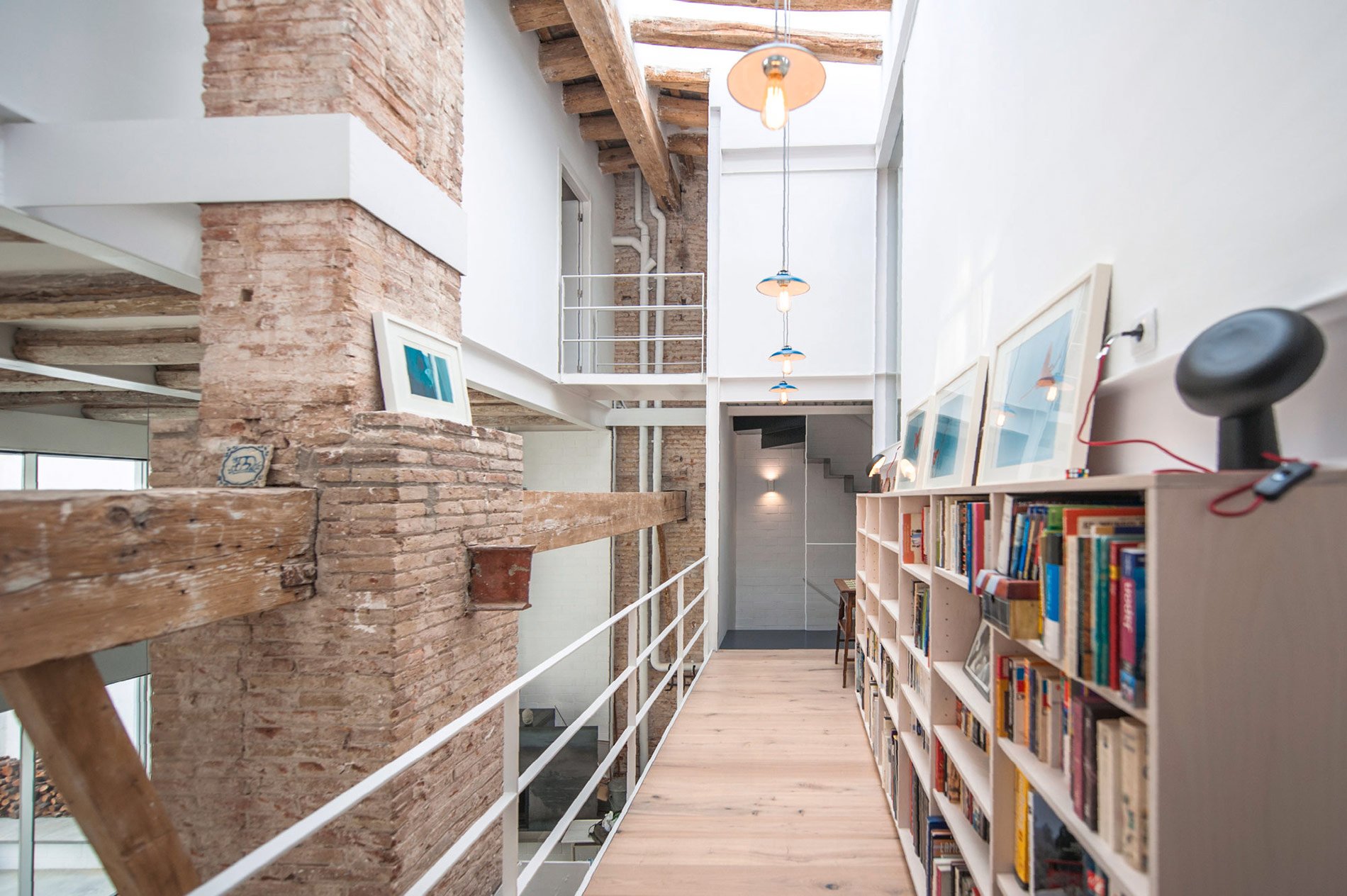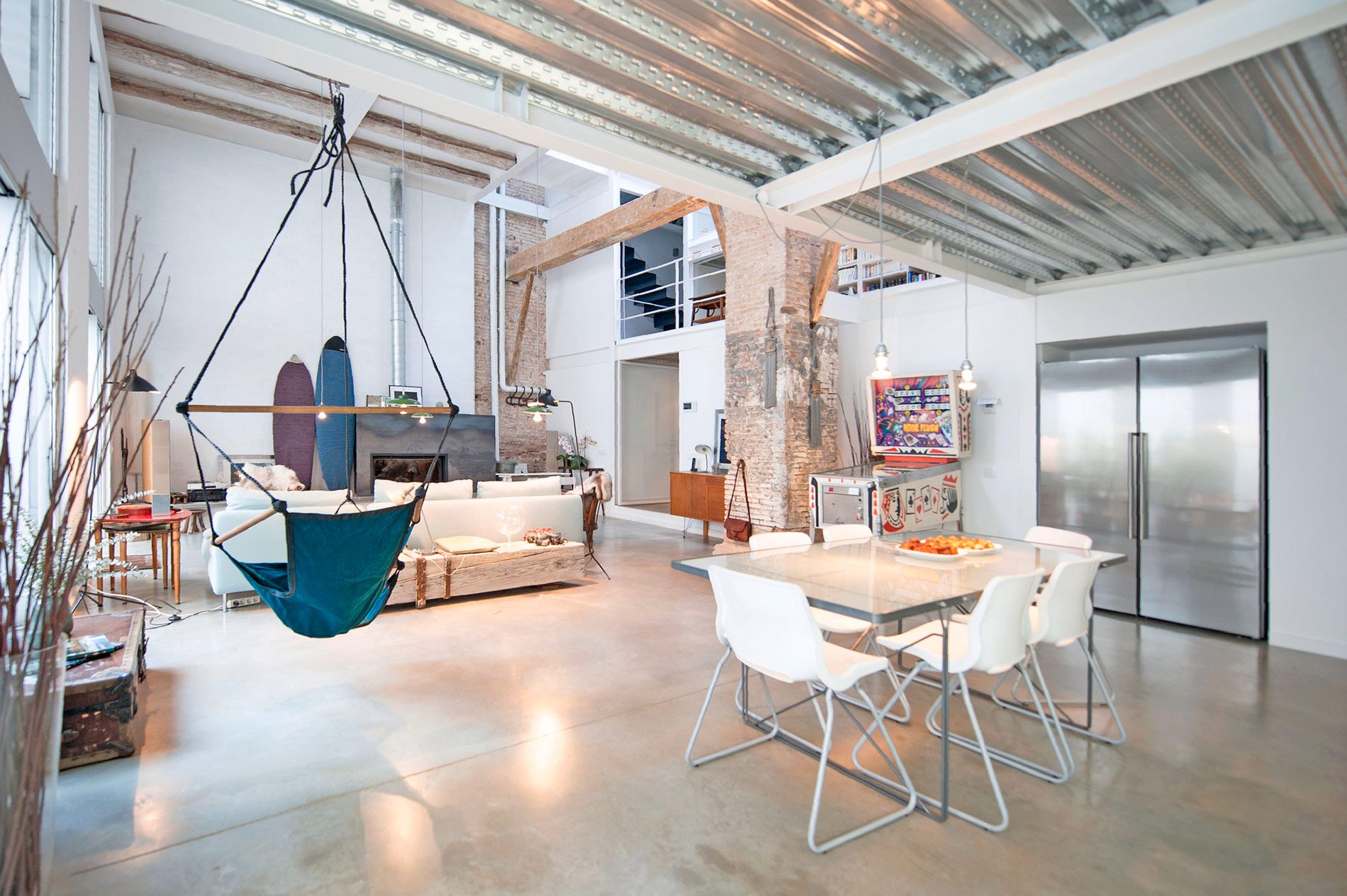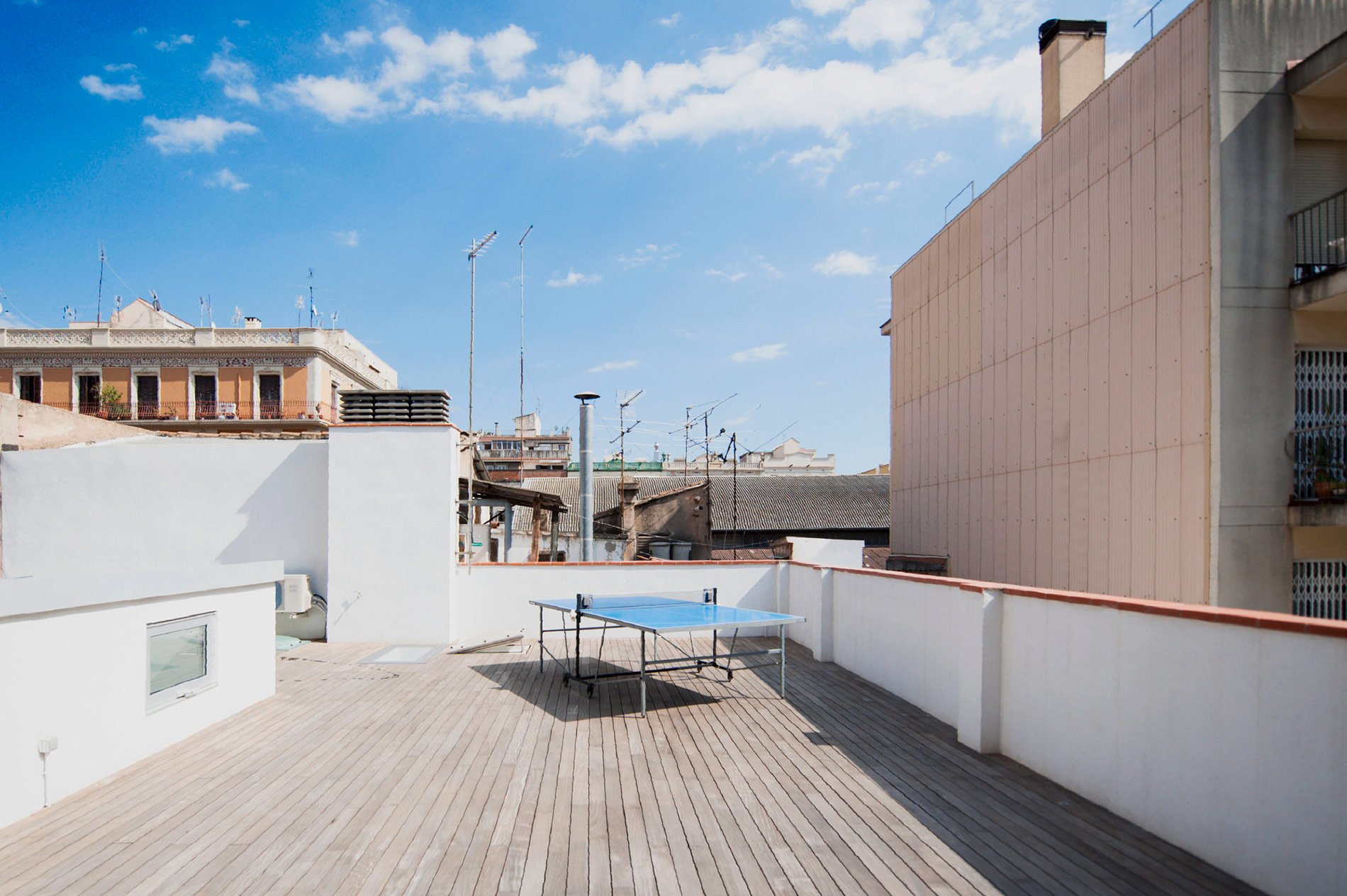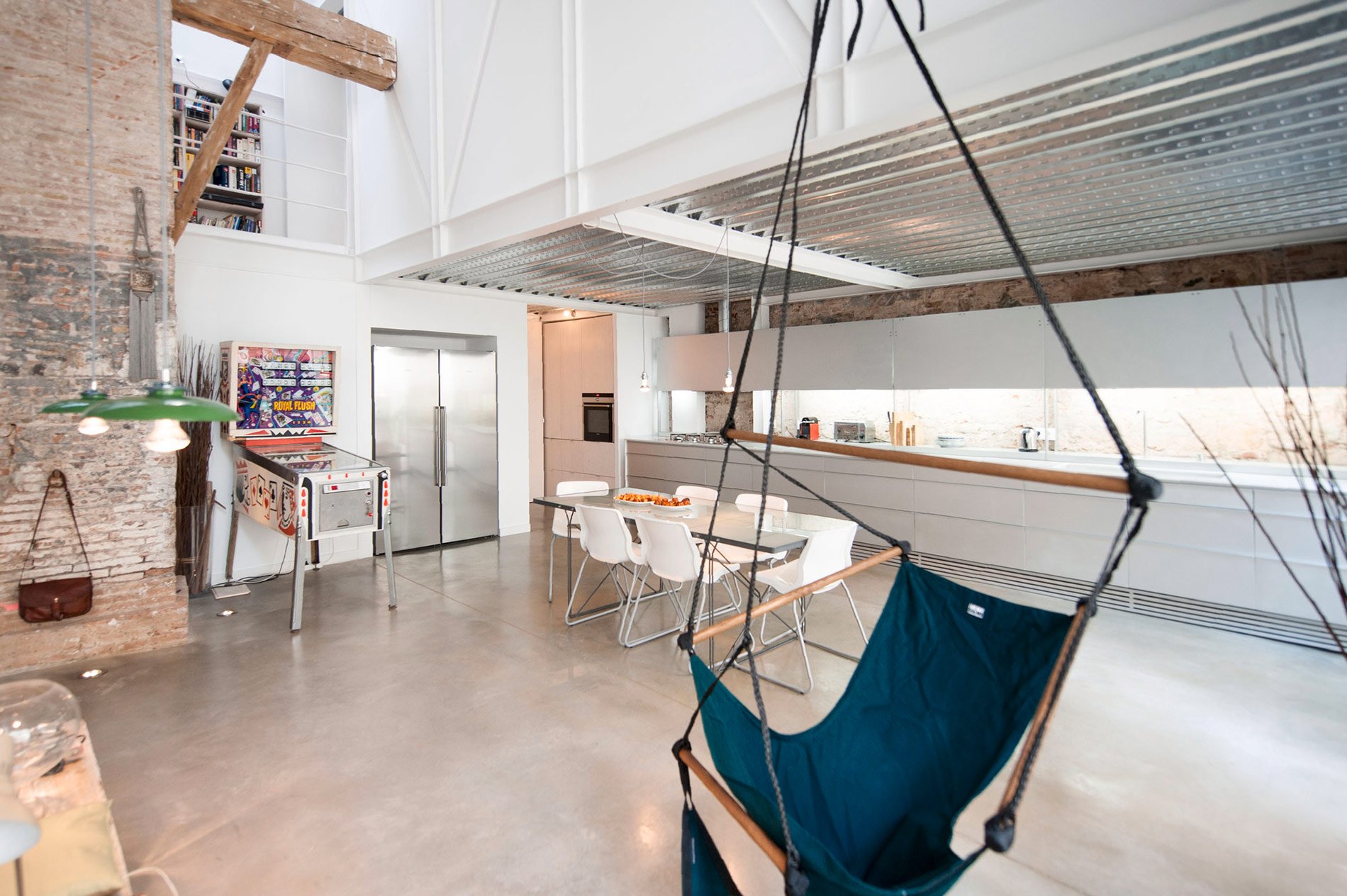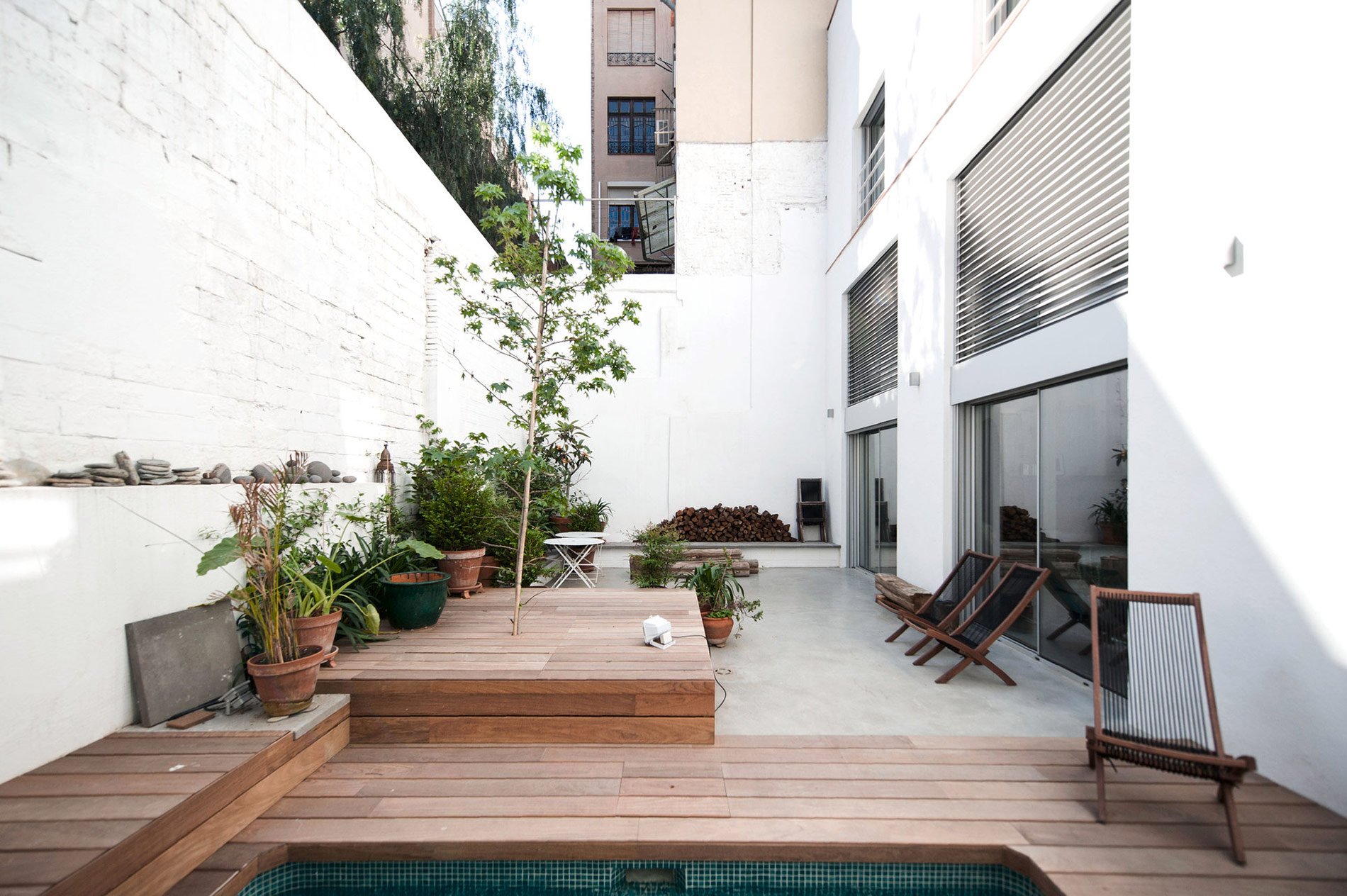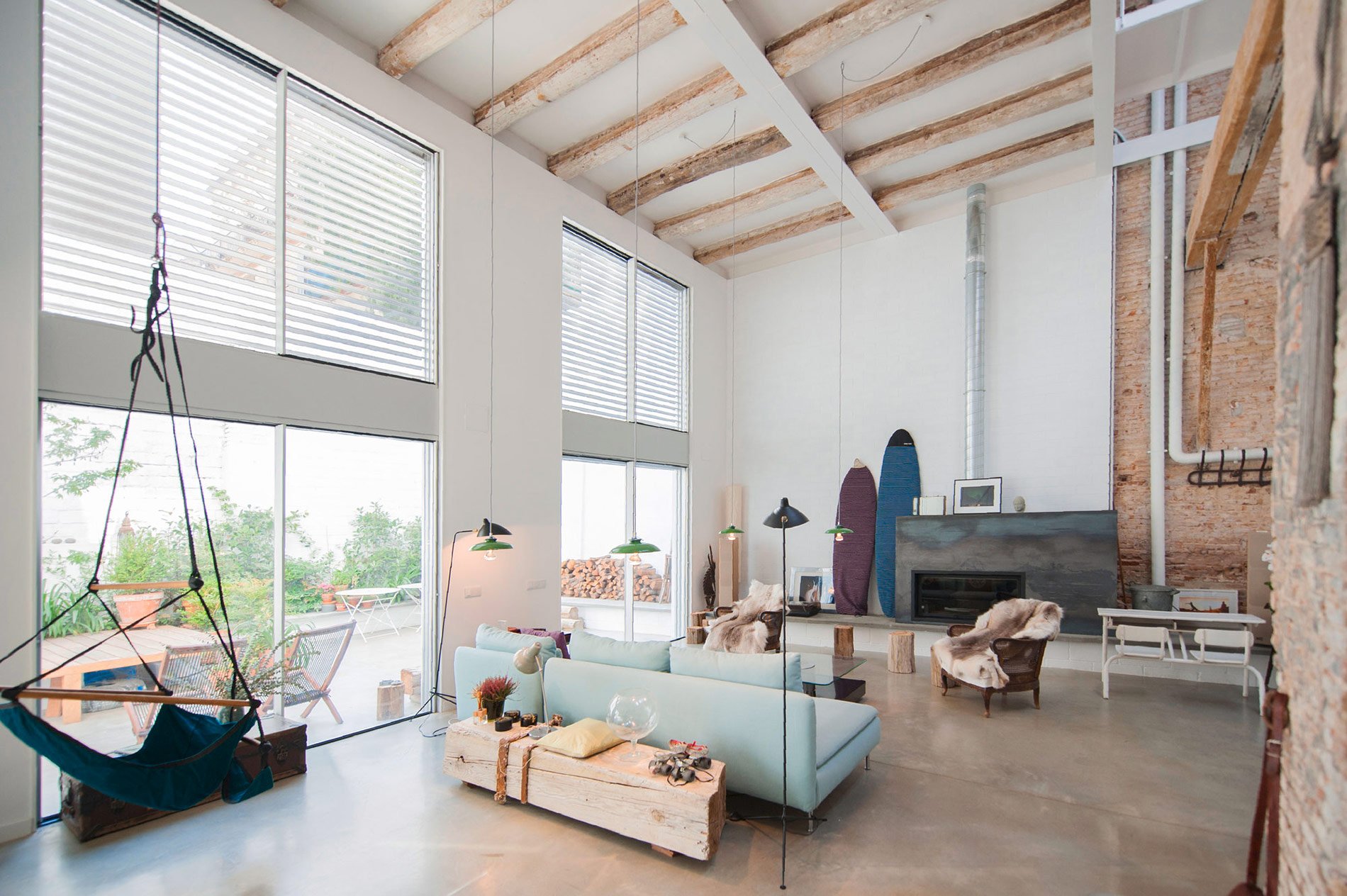As the times change and cities grow, architecture always seems to find a way to adapt. Barcelona provides a textbook example here, with the remodeling of an old dairy barn into a home for the family of architect Marc Mazeres. Working with local architect Lluís Corbella, the two took the dilapidated 1934 structure (which had been inactive since 1984 when legislation outlawed the presence of livestock in the inner city) and updated its interior into a stylish home for Mazeres, his wife and their three teenage sons.
A brick pillar is left to wonderfully dominate the central area of the home, providing a point for the other spaces to orbit around and feel connected through.
Starting first by stabilizing the existing structure, they were able to successfully preserve the original roof and facades. Most of the interior unfortunately needed to be removed, but this served as a double blessing as it left the architects a blank slate to work in and also made an original brick pillar that could be salvaged a centerpiece for the home. The design of the interior is based around meeting the needs of the children, the parents, and having a space in between to link the two worlds of the family. This division is seen through the more whimsical additions for the kids, such as a hanging chair, old pinball machine and a Ping-Pong table on the decked roof. It’s also present in the spaces for the parents, which combine the rustic nature of the salvaged elements of the barn’s interior with sleek modern materials, notably a gorgeous aluminum ceiling and also feature high quality acoustic insulation to ensure some peace from the chaos of raising three boys (and as someone who grew up with two older brothers, I can attest my parents would have appreciated this too). The renovation makes more modern of the interior than preserved, but the aforementioned brick pillar is left to wonderfully dominate the central area of the home, providing a point for the other spaces to orbit around and feel connected through. The pillar’s beauty is especially heightened by the inclusion of a suspended walkway, allowing one to get an up-close view of it from a novel angle. This all comes together to bring a new level of beauty to a space no one who built it could ever have intended, or hoped for. Just like the pasteurization process does for milk, renovations like these give architecture a welcomed extension of their shelf life. Photography Eva Cotman.


